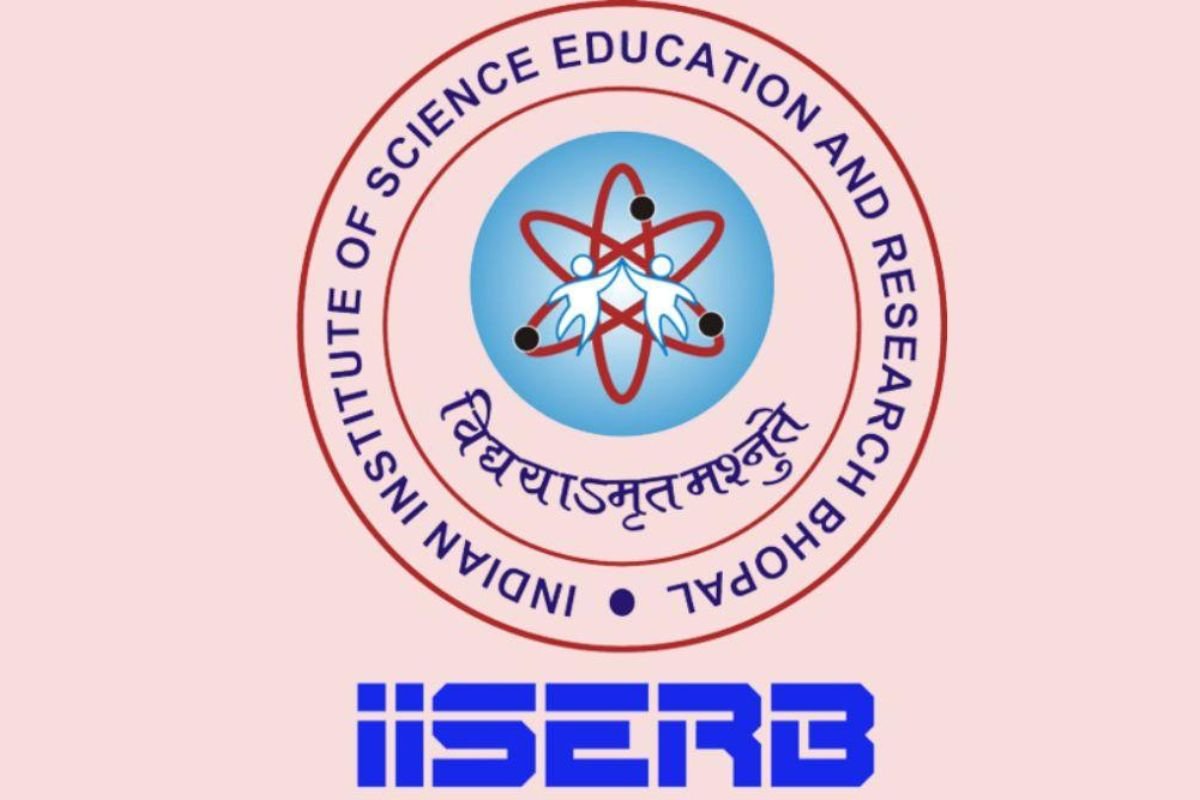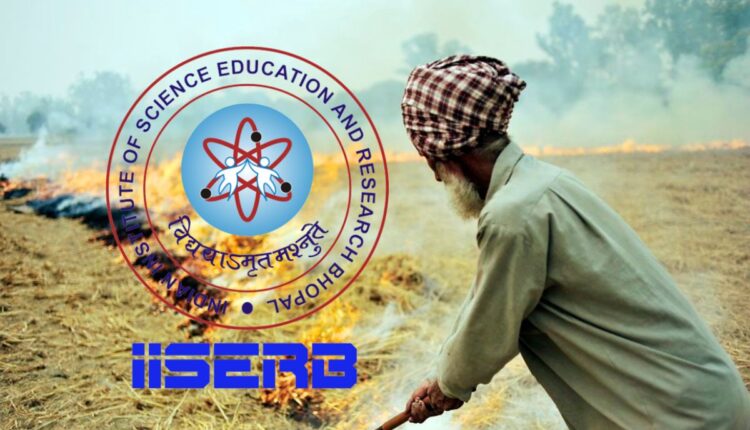IISER Research: Greenhouse Gas Emissions From Crop Residue Burning
IISER Bhopal researchers and international collaborators employed cutting-edge satellite technology to reveal a whopping 75% increase in greenhouse gas emissions from agricultural residue burning across India in the past decade.
IISER Bhopal’s satellite-based technology provides crucial information about greenhouse gas emissions from agricultural residue burning in India. The study’s findings underscore the urgent need for sustainable agricultural practices and effective policy interventions to mitigate the environmental impacts caused by crop residue burning.

The revolutionary findings
The Revolutionary Satellite-Based Technology for Monitoring Greenhouse Gas Emissions from Agricultural Residue Burning in India offers a powerful tool for monitoring emissions and implementing targeted strategies to combat this grave environmental crisis, highlighting the role of science and technology in shaping a sustainable future. The technology can facilitate monitoring of residue burning and provide region-specific mitigation strategies and policy interventions to combat this grave environmental crisis, emphasizing the role of science and technology in shaping a sustainable future.
IISER Bhopal, in collaboration with The International Maize and Wheat Improvement Center (known – even in English – by its Spanish acronym CIMMYT for Centro Internacional de Mejoramiento de Maíz y Trigo) and the University of Michigan, has developed a revolutionary satellite-based technology that sheds light on greenhouse gas emissions from agricultural residue burning in India. The study, published in the Science of the Total Environment journal, reveals a staggering 75% increase in emissions from agricultural residue burning across India over the past decade.
The talented team
The research was conducted by Mr. Monish Deshpande, Research Scholar, Greenhouse Gas Modelling and Applications Group, IISER Bhopal, within the framework of IISERB-CIMMYT collaborative project led by Dr. Dhanyalekshmi K. Pillai, Assistant Professor and Head of the Max Planck Partner Group, IISER Bhopal.

What is the challenge ?
Crop residue burning (CRB) has become a major sustainability challenge in India. In order to clear fields for subsequent crops, Indian farmers burn approximately 87 million tonnes of crop residues annually, surpassing the agricultural waste production of neighbouring countries. The burning of these residues releases pollutants and greenhouse gases into the atmosphere, which has severe and adverse impacts on climate, public health, and food security.
Explaining the seriousness of the issue, Dr. Dhanyalekshmi K. Pillai, Assistant Professor and Head of the Max Planck Partner Group, IISER Bhopal, said, “Crop residue burning has significant repercussions, as it releases pollutants and greenhouse gases to the atmosphere, leading to severe and adverse impacts on climate, public health, and food security. Current agricultural practices are unsustainable and adequate technology interventions are crucial.”
Details of the study
The study used spectral data collected by space-based instruments to accurately estimate greenhouse gas emissions from the burning of stems, leaves, and other crop residues. The findings of the research highlight Punjab as the highest emitter, with 27% of its cultivated area being burned in 2020. Madhya Pradesh closely follows, indicating the urgent need for region-specific mitigation strategies and policy interventions.
While the Indian government has implemented measures to reduce crop residue burning, such as incentives for farmers and promoting biofuel production from residues, the study’s results demonstrate the need for more effective and sustainable policies. The researchers emphasize that current agricultural practices are unsustainable and that technology interventions are crucial.
What is the solution ?
Tackling the challenges of CRB requires a comprehensive understanding of spatial and time-dependent emissions across the country. The study leverages remote sensing technology to provide precise insights into the scale of CRB emissions, enabling successful policy interventions to control residue burning.
Conservation agriculture, which involves reduced tillage and retaining residues as surface mulches, offers an effective way to reduce crop residue burning, production costs, and crop establishment time without sacrificing yields. The researchers highlight the importance of promoting these sustainable agricultural practices to combat the grave environmental crisis posed by CRB.
The study, led by Mr. Monish Deshpande of IISER Bhopal, provides crucial information for shaping a sustainable future. By utilizing satellite technology and combining it with scientific research, the study offers a powerful tool for monitoring residue burning, implementing effective policies, and mitigating the harmful environmental impacts caused by greenhouse gas emissions.
Highlighting the policy initiatives required in this sector, Mr. Monish Deshpande, Research Scholar, Greenhouse Gas Modelling and Applications Group, IISER Bhopal, said, “The Indian government implemented measures to reduce crop residue burning, such as incentives for farmers for not burning and promoting biofuel production from residues. While there was an initial decrease in burning in 2014-2015 due to policy implementation, a surge occurred in 2016, highlighting the need for more effective and sustainable policies.”
Groundbreaking satellite-based technology
The groundbreaking satellite-based technology developed by IISER Bhopal and its collaborators provides valuable insights into greenhouse gas emissions from agricultural residue burning in India. The study’s findings underline the urgent need for sustainable agricultural practices and effective policy interventions to combat the environmental crisis caused by crop residue burning. The technology can accurately estimate emissions on a large scale and facilitate region-specific mitigation strategies.
The study reveals Punjab as the highest emitter, with a significant portion of its cultivated area being burned in 2020. Madhya Pradesh follows closely, emphasizing the need for targeted interventions in these regions. The burning of rice, wheat, and maize crops contributes to 97% of India’s agricultural burning emissions, with rice being the largest contributor.
The researchers stress the importance of implementing sustainable policies to control residue burning. They highlight the need for more sustainable agricultural practices, such as conservation agriculture, which can reduce burning, production costs, and crop establishment time without compromising yields.
Precise insights published
“The detailed mapping of these emissions can underpin successful policy interventions to control residue burning. Conservation agriculture, which involves reduced tillage and retaining residues as surface mulches, has long been studied and promoted by CIMMYT and partners. It offers an effective way to reduce crop residue burning, cost of production, and time required for crop establishment, without sacrificing yields”, said Dr. Vijesh V. Krishna, a senior economist at CIMMYT.
The study’s use of remote sensing technology offers precise insights into the scale of emissions, enabling policymakers to make informed decisions. By combining satellite data with scientific research, the technology provides a powerful tool for monitoring and mitigating greenhouse gas emissions from agricultural residue burning.
The research conducted by IISER Bhopal, CIMMYT, and the University of Michigan was published in the prestigious Science of the Total Environment journal, highlighting the significance and reliability of the findings. The researchers aim to raise awareness about the gravity of the environmental crisis and emphasize the role of science and technology in shaping a sustainable future.
Also Read: How Light Pollution affects Agriculture in India?
Contact us – If farmers want to share any valuable information or experiences related to farming, they can connect with us via phone or WhatsApp at 9599273766 or you can write to us at “[email protected]”. Through Kisan of India, we will convey your message to the people, because we believe that if the farmers are advanced then the country is happy.
You can connect with Kisan of India on Facebook, Twitter, and WhatsApp and Subscribe to our YouTube channel.



